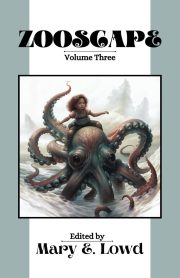Art Direction on a Budget
by Austin Conrad
Editorial note: This is the first in a two-part series from Austin Conrad on acquiring illustrations for tabletop games. Part 1 will focus on working directly with an artist, and Part 2 will present additional options, such as using stock art, public domain art, and similar resources.
In the tabletop games industry, the audience expects not just a well-written, but also a well-presented product. For independently produced games, delivering that whole package falls to the writer, and including quality art is a must. Art direction is the process of selecting and guiding artists to create the visual components of a project. Meeting the audience’s expectations helps a product succeed, but commissioning illustrations from artists can be difficult on a tight budget. However, this task can be achieved through creative resource management, honest negotiation with artists, and a spirit of compromise.
To start, we’ll cover some basics of the art direction process so writers can have a shared understanding with their artists. Then we’ll discuss the financial dimension of art direction. Finally, I’ll share some advice from my own experience on how tabletop game writers can seek creative solutions resulting in beautiful products made with fair compensation.
Basics of Art Direction: Scope
The process of creating an illustration begins with an art brief, which describes the illustration’s scope and what rights you’re seeking to purchase. It’s often helpful to share your budget up-front as well.
An illustration’s scope is defined by the piece’s color requirements and its size. Larger and more complex illustrations require more of the artist’s time and need a larger budget. Color can be generalized into line art, black and white, and full color. Line art looks like an inked sketch, whereas black and white includes grayscale shading. The Old School Renaissance movement uses both styles to evoke the classic interiors of Dungeons & Dragons in the 1980s. Full color illustration is ubiquitous in tabletop game covers and is also expected by the audience for interiors, even for indie publishers.
The size of an interior illustration is described based on how much space you intend the image to fill on the final page in layout. Common categories are spot art, quarter page, half page, and full page. Spot art is typically a single object, or perhaps a character’s face. Single-figure illustrations are typically a quarter page. If you’re producing a core rulebook, it’s a good idea to have a few of these to show players what their characters might look like while engaged in the game’s action. Paizo’s Iconic characters do this well in Pathfinder.
It’s important to remember that this terminology is pretty widespread for tabletop illustration, but there’s really no standardization.
Basics of Art Direction: Rights
Rights describe how you’re allowed to use the commissioned illustration in your products. In the tabletop industry, work for hire is common among larger publishers working with freelance writers, artists, graphic designers, etc. The term “work for hire” indicates that the client owns all rights to the product’s commercial use. This is convenient because there’s minimal ambiguity.
Some artists describe this as “full commercial rights” because that term is used on freelancer websites like Fiverr. However, work for hire typically increases the illustration’s cost because the artist can’t use their work elsewhere (for example, reselling it as stock art).
Managing Art Resources on a Budget
One function of a tabletop product’s art budget is to market your book. It’s easy to cut judicious corners with interior illustrations. I strongly recommend against doing so with your cover. In every writing field, good covers sell books.
When trying to reduce the cost of an illustration, my starting point is rights. As a tabletop creator, I don’t need work for hire but the right to use the illustration in my book. I often propose purchasing the exclusive right to use the illustration in tabletop media because that includes books, PDFs, virtual tabletops—any way I might publish or republish the project in the future. This means the artist could sell the illustration to a different writer as a fiction book cover, sell their art on Redbubble T-shirts, and so on, to provide the artist with additional revenue. It’s a win-win.
Some other useful rights may be familiar from the short fiction market. The right of first publication (or limited exclusivity—typically a year) helps you capitalize on your investment in the illustration while letting the artist continue drawing revenue from their work.
Another easy trim is color. I personally don’t feel gray scale works well with modern color interiors, but line art can look quite good with them. You may also consider asking the artist to use a limited color palette. Using limited or flat colors reduces the artist’s time spent shading and detailing the illustration, thus saving you money. This works well if one artist is doing a lot of work because it unifies the project’s presentation. Be aware that restrictions to specific shades gives the illustration a “flat” look. This sometimes appears cartoonish, but is often surprisingly attractive. Asking for particular creation methods and styles can also impact the budget. For example, a “painted-style” piece usually requires more labor than a “manga-style” piece.
Another useful tool is trading services. Many tabletop artists are also creators. Trading writing or editing for illustration is a great option to expand the budget. My experience is that editing is more useful than writing because fellow creators like to produce their own work. Trading, then, helps both parties polish their product, but beware of one or both sides feeling they’re getting unequal value. I recommend sharing a spreadsheet both parties have access to, with the value of work completed and/or hours worked. This helps each side quantify their role in the partnership and reduces dissatisfaction.
Finally, sometimes it’s worth just asking what the artist is able to do on a specific budget. Often when I’m working with a new artist, I don’t send my budget. Instead, I ask what compensation the artist wants for the project. If I can’t make their offer work, I begin a conversation about how we can reduce the illustration’s scope to fit my budget. Do not devalue the artist’s labor. Don’t wheedle about the price. Just change the art brief’s scope. Finding a mutual compromise is based on respecting one another as writer and artist. These discussions laid the foundation for my longest and most fruitful artist relationships.
 Austin Conrad is a full-time writer and game designer. He is best known for his indie publications for RuneQuest. His work for other systems has been published by EN Publishing and Menagerie Press. Austin’s most recent release is To Hunt a God, an adventure in which the players quest into a magical forest to perform an act of divine euthanasia. You can learn more about Austin’s work on his website, akhelas.com.
Austin Conrad is a full-time writer and game designer. He is best known for his indie publications for RuneQuest. His work for other systems has been published by EN Publishing and Menagerie Press. Austin’s most recent release is To Hunt a God, an adventure in which the players quest into a magical forest to perform an act of divine euthanasia. You can learn more about Austin’s work on his website, akhelas.com.


